Reflections on the Tragic Loss of Life and the Urgency of School-Based Mental Health Services
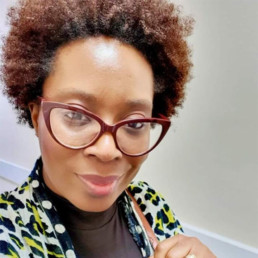
Written by Bianca Chappell
Bianca Chappell is a Mental Health Strategic Lead, Cognitive Behavioural Coach and Mental Health First Aider.
Recently, I’ve been deeply saddened by the tragic loss of young life, caused by someone struggling with acute mental illness. It is a stark reminder of how critical it is to address mental health early and effectively. For children and young people, the importance of timely intervention cannot be overstated. Schools, as the daily environment for so many children, are uniquely positioned to play a pivotal role in this.
In the wake of the COVID-19 pandemic, the mental health crisis among young people has intensified dramatically. According to recent data, one in six children aged 5 to 16 now require mental health support, a significant increase from previous years. This rise highlights the urgent need for schools to implement comprehensive mental health services.
Early Intervention and Support: A Crucial Step in Education
Early intervention is key to preventing mental health issues from escalating. Schools can provide a safe space where children can access the support they need before problems become more severe. By having designated mental health professionals on-site, schools can offer advice and support, helping students balance their emotions and manage their mental well-being.
Moreover, these professionals are essential for assessing and identifying risk profiles. By understanding the unique challenges each student faces, schools can tailor interventions to meet individual needs. This personalised approach is crucial in addressing mental health effectively and ensuring that no child falls through the cracks.
The Power of Community and Joined-Up Services
For these efforts to be truly effective, schools must work closely with community services. A joined-up approach ensures that recommendations, resources, and reviews of care are coordinated and comprehensive. Risk assessments should be an integral part of this process, ensuring that all aspects of a child’s well-being are considered.
Community involvement also allows for a broader network of support, including parents, healthcare providers, and local organisations. Together, they can create a robust support system that extends beyond the school walls, ensuring continuity of care and support for children and young people.
Why This Matters: Implementing Change in Education
The implementation of designated mental health services in schools is not just a beneficial addition; it is a necessity. With mental health challenges on the rise, our education system must adapt to meet the evolving needs of students. By doing so, we can foster a generation of young people who are not only academically successful but also emotionally resilient.
In conclusion, the importance of mental health services in schools cannot be overstated. By intervening early, assessing risks, and working collaboratively with community services, we can ensure that every child has the support they need to thrive. It is time to prioritize mental health in our educational system, for the well-being of our children and the future of our society.
Power up your passion: Tomorrow’s Engineers Week and the drive for diversity in engineering careers

Written by Engineering UK
EngineeringUK is a not-for-profit organisation that drives change so more young people choose engineering and technology careers. Our mission is to enable more young people from all backgrounds to be inspired, informed and progress into engineering and technology.
As Tomorrow’s Engineers Week 2024 approaches, we find ourselves at a pivotal moment to ignite excitement and purpose among young people for careers in engineering and technology. From November 11 to 15, EngineeringUK will host this nationwide celebration under the theme Power up your passion, highlighting how personal interests can lead to fulfilling and impactful careers in STEM fields. This initiative is not just about inspiring the next generation; it’s also about breaking down barriers to ensure engineering is accessible and appealing to young people from diverse backgrounds.
Understanding the importance of interest-driven careers
A recent survey conducted at the Big Bang Fair 2024 revealed that 64% of young people are driven by the idea of pursuing careers that align with their interests and passions. This statistic sheds light on a critical point: engagement and motivation in career exploration are heightened when young people can see a clear connection between their personal passions and professional opportunities. More than just a job, a career in engineering can be an avenue for self-expression, creativity, and problem-solving—qualities that resonate strongly with young minds.
However, translating this potential into reality requires us to address significant challenges and misconceptions that still exist, particularly around diversity and inclusion in engineering.
Bridging the diversity gap in engineering
The engineering sector faces a pressing diversity problem. As highlighted by the Science Education Tracker and UCAS Project Next Generation research, only 16% of girls feel that engineering is a suitable career for them, and women still make up a mere 18% of first-year engineering undergraduates. This gender disparity is compounded by the lack of visible female role models and the underrepresentation of people from various ethnic and socioeconomic backgrounds. Furthermore, many young people have limited awareness of the post-secondary pathways into engineering, with 57% of 13- to 17-year-olds admitting they know little about options like apprenticeships or technical courses.
Diversity, equity, and inclusion (DEI) are not just buzzwords; they are fundamental to creating a robust and innovative engineering workforce. The sector thrives when a multitude of perspectives comes together to tackle complex challenges. Therefore, promoting engineering careers must actively consider the experiences of underrepresented groups, including girls, ethnic minorities, disabled people, and students from lower socioeconomic backgrounds.
The role of Tomorrow’s Engineers Week
Tomorrow’s Engineers Week serves as a powerful platform to address these issues head-on by offering resources and experiences that inspire and inform. Teachers, career leaders, and students will have access to free, flexible materials that can be integrated into lessons and assemblies, making engineering careers relatable and engaging for young people.
One of the standout features this year is the Day in the life film series, which provides an authentic look at the daily work of early-career engineers from various fields. These films are designed to be flexible, fitting easily into lessons or form times, and they emphasise the real-world applications of STEM skills, particularly those that draw on creativity and problem-solving.
In addition, the Match your passion panel will bring young people face-to-face virtually with early-career engineers who can answer questions, offer tailored advice, and share how their own passions led them into engineering. This personalised approach is crucial in showing young people the diversity of pathways available and demystifying a field that is often perceived as inaccessible or irrelevant.
Supporting teachers and career leaders
Teachers and career leaders are essential allies in the effort to diversify engineering. Yet, according to EngineeringUK research, they often lack the support and resources to guide students effectively. With only 43% of young people having participated in a STEM activity beyond standard lessons and 46% of career advisers citing funding and time constraints as barriers, there is a clear need for more robust support systems.
Tomorrow’s Engineers Week aims to address these gaps by offering practical, easy-to-use resources that empower teachers. For example, lesson plans, interactive sessions, and career-focused panels can bring STEM subjects to life, making them more appealing and accessible. As Dr. Hilary Leevers, Chief Executive of EngineeringUK, points out, the week’s activities are designed to connect young people with engineers who have turned their interests into rewarding careers, inspiring students to envision their own futures in the sector.
Engineering a more inclusive future
Ultimately, initiatives like Tomorrow’s Engineers Week are about ensuring that every young person, regardless of gender, race, disability, or socioeconomic status, has the opportunity to explore engineering careers. By focusing on interest-driven engagement, the campaign makes STEM more approachable and aligns with the principles of DEI that are crucial to our education system.
For more information on how to get involved in Tomorrow’s Engineers Week, and to access these invaluable resources, visit Tomorrow’s Engineers Week and join the conversation using #TEWeek24. Let’s make engineering a field where every young person sees a place for themselves—a future powered by passion, built on diversity, and driven by a desire to shape the world.
Together, we can power up the passions of the next generation and pave the way for a more inclusive, innovative engineering landscape.
Positive Ways to Talk About Difference, Equality and Discrimination with Children

Written by Pop 'n' Olly
Pop‘n’Olly is the UK’s leading LGBT+ educational resource provider for primary aged children, parents, carers and teachers. The company's resources and books are being used in primary schools across the UK as well as globally in over 70 countries. www.popnolly.com
When I ask children to guess when same-sex marriage was introduced they come up with all sorts of wildly wrong suggestions… ‘The 1950s?’ they say and I indicate it’s a bit more recent. ‘The 1960s? The 1980s, 1990s?’ they throw out. When I tell them it was 2013 they are usually staggered – something that they’ve known all of their lives is so recent!
We live in a country that has not only legalised same-sex marriage but also has the Equality Act (2010) which protects a wide range of people of all ages, including people with different sexual orientations and trans/non-binary people. This is something to be celebrated with children. It’s not just in their school that staff encourage them to see other people as different but equal, but also in the whole of the UK – and that’s enshrined in law!
Prejudice relates to beliefs, thoughts and feelings about someone or a group of people. Prejudice is usually negative. Discrimination relates to actions against someone because of their identity or characteristics.
Discrimination is an action against someone because of their identity or characteristics. It grows out of prejudice, which is a (usually negative) belief about someone. As teachers, our job isn’t to police children’s thoughts, but instead, to help them see the wonderful variety of people who exist and help them not be afraid of these differences.
Using visuals, drop-in references, and explicit teaching we can ensure that children’s view of the world is one where there are millions of ways to be a human and some of these ways look different from them.
Celebrating differences isn’t just about helping all children feel good about themselves but it affects how we see others. When faced with differences we can help children to see those differences as strengths. Whilst we have many things in common, humans have evolved to be widely different across the globe and our experiences living different lives, both in the UK and elsewhere means we have different skills and knowledge. Sharing these differences allows us to learn from each other and to see the world through others’ eyes – sparking new thoughts, new ideas and new perspectives.
Here are some ideas you might try out with your children:
- Actively teach children about The Equality Act (2010). Use our posters, lesson plans and resources to ensure that children understand that treating people fairly and equally is part of the culture and law of the UK.
- Help children understand that people are not treated equally around the world and that change happens because of action. Examples of this might be the Stonewall Riots in the US, and the legalisation of same-sex relationships in the UK – that came about because of the work of Leo Abse MP.
- Instead of ‘Heads Down Thumbs Up’ at the end of the day, get the children to play a game where they partner up and have to find two things the same and one thing different from each other which they then share with others. Children could then try and find others who match (or are different) – or even make up their own rules for the game.
- Learn a ‘Sign of the Day/Week’ to help children understand that communication is different for different people.
- Play Paralympic sports in P.E. such as seated volleyball or goalball with the same competitive enthusiasm as other school sports (these were so popular with my Y6s!)
- Use CBBC’s ‘My Life’ series to help children learn more about other children’s lives, such as ‘When Mum Becomes Dad’ and ‘Mae’s Guide to Autism’.
- Ensure that your classroom displays represent a wide variety of people of all shapes, colours, abilities, genders, etc.
- Discuss scenarios with children about people who are experiencing discrimination. Talk through ideas on how this person may feel and what children could do if they witnessed this on the playground for example.
It is very hard to change the world, but we can make our schools somewhere where everyone is welcome and make our little bit of it more welcoming. We can help all children feel good about themselves by celebrating differences and we can help them to see that difference is not something to be afraid of, but a strength.
You can download our Discrimination, Prejudice and Equality Medium Term Plan, together with all the lesson plans, videos and resources that you need to work with your UKS2 class on this.
How My Experiences with ADHD in Different Workplaces Led to a PhD and Training Programmes for Businesses and Schools

Written by Steve Ollington
ADHDer studying the pros and cons of ADHD in the workplace, with 19 years in digital marketing, and more recently running ADHD training.
I’m Steve Ollington, and I’m currently undertaking a PhD at Swansea University, supervised by Professor Brian Garrod, focusing on ADHD in the workplace. My research journey started with a personal observation: despite having a consistent skill set and high level of experience in my profession, I noticed that my performance varied significantly depending on the workplace environment. In some settings, I thrived; in others, I struggled to achieve the same level of productivity and job satisfaction. This discrepancy led me to examine how different workplace environments interact with ADHD traits, not just in terms of challenges, but also in enabling the often-overlooked strengths associated with ADHD.
Observing the Role of Environment in My ADHD Performance
In some roles, I was given autonomy and flexibility, which allowed me to excel. I had the freedom to approach tasks creatively, was trusted by managers, and felt supported by colleagues who understood different thinking styles. In these settings, I could harness the strengths that come with ADHD, for example innovative thinking and alternative (but effective) problem-solving. My performance was high, and I felt truly engaged in my work.
In other workplaces, however, I encountered rigid structures and strictly enforced processes with little flexibility. There was often limited understanding of alternative approaches to work, and I felt pressured to conform to methods that didn’t align with how I function best. This rigid structure amplified the challenges of ADHD, while stifling my ability to bring my strengths to the forefront. In these environments, I found myself struggling as a result.
Recognising the Potential of ADHD Strengths in the Workplace
Through these contrasting experiences, I realised that while my ADHD challenges remained constant, my ability to utilise my strengths was significantly influenced by the environment, including the acceptance of my differences by those around me. Some workplaces allowed me to maximise my capabilities, while others hindered them. This insight led me to pursue a PhD, focusing on ADHD in professional environments. Rather than just examining the difficulties faced by ADHD employees, I wanted to highlight the strengths and explore the specific workplace conditions that either foster or inhibit these strengths.
Research supports the notion that ADHD brings unique strengths. Dr Heiner Lachenmeier’s book ADHD and Success at Work, for instance, describes how people with ADHD often have a “wider breadth of association” due to a reduced filtering of incoming information, which enhances creativity and problem-solving abilities.
Research by Dr Nancy Doyle on neurodivergence in the workplace, combined with studies on creativity and imagination by White and Shah demonstrate that ADHD individuals can excel in environments that embrace cognitive diversity. Creativity, for instance, is often heightened in ADHD individuals due to the way they process information, thinking beyond traditional boundaries. However, these strengths can only be fully realised in workplaces that are flexible, supportive, and open to alternative working styles.
Dr Edward Hallowell also discusses this in his book Driven to Distraction at Work, noting that ADHD can fuel high energy, hyperfocus, and enthusiasm when supported in the right way. Additionally, Prof Amanda Kirby and Theo Smith, in The Power of Neurodiversity at Work, as well as Leanne Maskell in ADHD Works at Work, advocate for environments that understand and embrace neurodiversity, highlighting the benefits employees with ADHD can bring to the workplace.
Developing Targeted ADHD Training Courses
This studying inevitably led to increasing my own understanding of ADHD and its impact on my work, and the more I learned, the more it became evident that many workplaces lack the necessary understanding and support for neurodivergent employees. Despite increased emphasis on diversity and inclusion, neurodivergence (including ADHD) is still very often misunderstood, with much of the current training being very broad and general, not focusing enough on individual conditions. I saw, and experienced, the need for specific training to address not only the challenges but also the strengths associated with ADHD, and the resulting understanding from workplace peers who might have neurotypical only expectations of skills like communication and approaches to tasks.
This realisation led me to transform my PhD literature review into two targeted training courses. The first course is designed for businesses, specifically aimed at training managers, HR, and colleagues of people with ADHD, focuses on understanding ADHD from a balanced perspective, covering how ADHD employees think differently, the areas in which they may need support, and how workplaces can harness their unique strengths. It encourages flexibility, trust, and space for creativity, which are key to enabling ADHD employees to thrive.
The second course is geared towards educators, providing ADHD training for teachers, TAs, and SEN staff, to equip them with the knowledge to reassure ADHD children and teenagers on how ADHD doesn’t have to limit them as they grow up, and that in fact they their ADHD also brings strengths, such as creative thinking and resilience. By emphasising these positive traits, educators can help ADHD students see their future as one filled with potential and opportunity.
The Diversifying the Curriculum Conference 2025
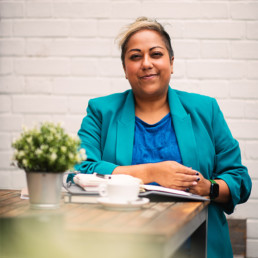
Written by Bennie Kara
Co-Founder of Diverse Educators
At Diverse Educators’ Diversifying the Curriculum Conference, Hannah Wilson started the event by reminding us all that the work on ensuring curriculum is deep, broad and diverse is not done yet. Our speakers certainly reminded us just how much we can do to make sure that we are constructing a curriculum for all.
Christine Counsell’s opening keynote was joyful to listen to, not least in part due to her incredible depth of awareness and knowledge about the humanities curriculum. She connected effective learning to effective curriculum design and spoke about how thoroughness is possible and how thin unconnected content does not serve the needs of our children. She reminded us that the humanities are replete with story and that each lesson should have children longing for the next one. In her keynote, she recognised the need to work hard to deliver unfamiliar content but also how that hard work pays off when students have experienced language, symbols and narratives repeatedly throughout the curriculum from year 3 onwards in her words meaning comes from relationships with everything else and that the curriculum should be a series of constant bursts of energy fueled by indirect residents and anticipation.
In Emily Folurunsho’s session, we were treated to an in-depth look at Black British history and how important it is to ensure that British students learn about Black British history and not just the history of Black Americans. She was clear in her message that the first time that students encounter a black figure from history should not be through the lens of enslavement. She talked us through three themes that allow us as educators to give a fuller picture of Black British history as possible. She talked about figures from the pre-Anglo-Saxon past, from the Tudor age and from the Victorian age. It is important, she said, that we study Windrush and its legacy, but that we also contextualise Windrush in light of broader race relations in the mid 20th century. She talked compellingly about how Black British history has a connecting influence in terms of providing representation and presence for black students, touching on her own history in Britain and how she personally learned about Black history. She went on to explore how Black British history is challenged in its presence and its validity. To ensure that Black British history is truly embedded into the curriculum, we must seek sources from Black voices and we must refer to Black historians.
In David Bartlett’s session on the global boyhood initiative, we learned about the need for healthy masculinity and healthy emotions in boys and how that goes hand in hand with healthy gender expectations. He explored what healthy gender expectations look like and how to facilitate young people in breaking free from limitations. In his session he explored gender differences and gender stereotypes, asking: what is nature and what is nurture? He highlighted the idea of pink and blue roles in the development of gender identity and responsibility.
Dana Saxon’s session on roots and relevance started with Dana’s personal experience of history as a subject. She talked about how history was not for her in her early experiences and how she felt that her history had been erased. It was only as an adult that she started family history research and that gave her a sense of personal ownership of her story and the ability to create and curate the family archive. She explored the disconnect in history teaching, asking who decides which histories are more important and invited us to consider who is remembered and who this suggests matters. She was clear in her message that history has been distorted, disfigured and destroyed and that erased histories disempower people. She stressed the need to find untold stories and the stories of migration because there are empowering stories hidden deep in our archives. It is a way, she said, of connecting the dots and answering the questions: how did we get here and why does it matter?
Samantha Wharton spoke about Black British literature. She referenced her work and resources on Leave Taking by Winsome Pinnock. Focusing on this text, she explored the context of Pinnock’s play and how teachers can take a cross curricular approach in delivering lessons on it. The text, according to Wharton, is a valuable insight into shared immigrant experiences, family dynamics, the generation gap and matriarchal figures, as well as themes of education and what is deemed sub normal. She encouraged us to go beyond the classroom when exploring literary texts like Leave Taking. She referenced the work of Lit in Colour, outlining the statistics on representation in literature and explored how a simple audit activity can develop thinking about diversity in the curriculum.
Krys McInnis’ session touched on the journey between diversifying the curriculum and decolonizing the curriculum. He asked us to consider positionality in approaching this process, stressing that all people have lived experience and we all have different starting points when undertaking curriculum reform. He spoke compellingly about redistributing power, centring the voices of the colonised and challenging the notion of who holds knowledge and how we make space for marginalised voices and epistemologies. He told us that unlearning is needed and that we need to be willing to adjust, not just approach the process of decolonization as a road map or a checklist so that we can say we are done. In essence he asked us to rethink knowledge and also how language is used today to define power and perspective.
I finished my day listening to Shammi Rahman talking about how RE can help us embrace unity. It was shocking to hear that 500 secondary schools report delivering 0 hours of RE and that led Shammi to ask the question: what is the value of RE for staff, for students, for communities and for parents especially when it can prevent misunderstandings and misconceptions around people and their faiths. Shammi helped us understand that children may be missing out on the opportunity to talk and listen as it is such a central skill in RE and that, in doing so as teachers, we can help them avoid generalisations about groups of people. She stressed that it is difficult to have broad knowledge but that we do need to make time to read and to become comfortable with being uncomfortable in delivering certain aspects of RE. We cannot let our fear of offending people or getting names wrong prevent us from teaching RE lessons that are outside of our own experiences. She went on to talk about what difference it may have made to her peers if they knew about the contributions of her community to the national story. She stressed the need to use quality resources, referencing the work of Mary Myatt and also the work of Nikki McGee. McGee’s work on Black history tours to enrich the curriculum is an excellent source of support for teachers. She finished by reminding us that the beauty of RE is in its intersections.
David Lowbridge-Ellis’s closing keynote reminded us that working in diversity, equity and inclusion is often an unpaid, frustrating and thankless job. He also reminded us that we need to articulate our commitment to the work and to keep bringing about the message of why this work is important. He referenced the work of Dr Rudine Sims Bishop in 1990 on the importance of windows, mirrors and sliding doors as a key metaphor. He pointed out that the choices we make in the resources and examples we put in front of our students may result in students feeling like they belong in the classroom. That it is crucial to make sure that there are windows into the world outside of students so that they are developing a broad cultural capital. He too referenced the work of Lit in Colour. But he returned to his driver and one that perhaps we should all pay attention to, the need to have children we are serving to have a better school experience then we did. It is incredibly important that our values show that we are committed to this work. And it is not just about the curriculum, he spoke about accountability and how some people have the opportunity to shape and influence recruitment, to shape development priorities and equality’s objectives. This is a large sphere of influence.
It was not possible to attend every single session, as much as I would have liked to. But there were common threads and I hope that you can see them in this summary. The Diversifying the Curriculum Conference remains as relevant as it did five years ago because as we said at the start, the work is not yet done.
At The Reverse Mentoring Practice, we want to have BIG, game-changing conversations
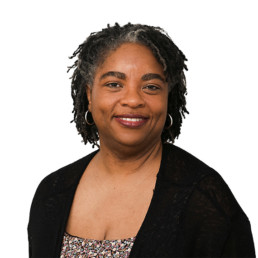
Written by Stacy Johnson MBE
Chief Scientific Officer and Founder of The Reverse Mentoring Practice. Stacy is a leading voice on the frontier of justice, inclusion and belonging work. She helps organisations to re-imagine, re-engineer and reset their culture. Her groundbreaking work on reverse mentoring and practice supervision is making waves. Stacy is #TriniToDeBone
We want to talk about reverse mentoring in situations where you’re trying to improve inclusion, as an approach to retaining staff, and who may also be dealing with barriers to inclusion, who may find themselves in tricky situations and circumstances related to their protected characteristic. We do not want to have superficial conversations.
We want to celebrate the lived experiences of people through the magic of reverse mentoring, whether it is informal or formal, whether it’s programmatic in your organisation, or ad hoc.
We want to help you listen differently, to spark change in your organisations by empowering you and your senior leaders to move forward with cultural humility to ignite equitable action.
We sat down with Stacy Johnson MBE, our Chief Scientific Officer & Founder at Reverse Mentoring Practice who shared her insight and research on reverse mentoring. In the online seminar Stacy also held a question-and-answer session where one member asked:
Q: How can we get the people that would benefit from a mentoring relationship interested?
Stacy: Whether you are a very senior person or a junior person, you should periodically pause and assess.
Ask yourself: Am I being mentored? Am I mentoring anybody else? And if one of those things is not true, you need to make that right. You should always, at any point whether it’s formally or informally, be mentoring or being mentored.
It’s about reminding people on both sides of the equation that there is benefit from being a mentor and being mentored.
As far as those who are already converted, we should be more open about what mentoring is.
For example, the way I got a reverse mentor was because an amazing young man said to me, “will you mentor me?” And I actually felt a bit of horror. In fact, I remember saying to him, “I’m a terrible mentor! Let’s just meet and have some coffees!”
And then eventually, after several of those meetings, I said, “actually, will you reverse mentor me?”
I guess that’s because I had never been formally trained as a mentor. Some people have the impression that you have to be really knowledgeable, and you have to have all the answers. The idea of being formally asked to be a mentor is probably quite intimidating to even the most amazing leaders.
For me, I just want to have interesting conversations with this amazing young man and share ideas about things that had worked for me, things that I’d seen had worked for other people who were similar to him, or different to him. As soon as he labelled that mentoring, I panicked. So, it might be the same the other way around.
Maybe for the people who are not yet converted, it’s about offering it up as an informal relationship and connecting with somebody who is more junior to you, or more senior to you. Maybe that pulls them in, they begin to see the benefits and then they can happily then label it mentoring. They will be extolling the virtues of mentoring, and you won’t have to convince them.
If you want to know more, join us at the Diverse Educators webinar where we will explore how we unlock the potential of reverse mentoring and cultural humility in driving personal growth and organisational success. The recording will also be available to playback afterwards.
Challenging Hair Discrimination Through Racial Narratives, Industry Knowledge on the Economics of Hair and Counter Literacy Equality, Diversity Strategies
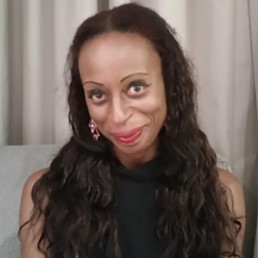
Written by Dr Pamela Odih
Pamela is a senior lecturer in Sociology within the Sociology department at Goldsmiths University of London. Her research specialises human rights communication and the significance of me/space to the regulation of subjects and construction of gendered subjectivity with specific regards to organisational analysis and educational policy.
On 27th October 2022 the Equality and Human Rights Commission (EHRC) published new guidance aimed at ensuring that: “Pupils should not be stopped from wearing their hair in natural Afro styles at school” (EHRC 2022). The guidance is supported by resources that are “endorsed by World Afro Day and the All-Party Parliamentary Group for Race Equality in Education” and are designed to assist school leaders in ensuring that “hair or hairstyle policies are not unlawfully discriminatory” (ibid.).
In October 2024, having successfully applied for a British Academy and Leverhulme Trust small grant, I began my empirical study which is entitled “Challenging Hair Discrimination Through Racial Narratives, Industry Knowledge on the Economics of Hair and Counter Literacy Equality, Diversity Strategies”. Research Focus: The proposed research is partly an impact analysis of the application of EHRC resources, into school policies and the responses of school leaders to the suitability and adaptability of these policies.
An additional focus of the study is to envisage the scope and form of guidance on anti-race-based hair discrimination that informs young people as consumer citizens in respect to their cultural heritage of hair sculpture as an expression of racial belonging. I am currently interviewing UK and USA NGOs, charities and human rights legal practitioners to ascertain the impact of their activism in respect to PSHE and citizenship studies educational policy and race equality legislation.
If you have such involvement in this subject area, I would greatly appreciate interviewing you. Please, in this regard, contact me at Goldsmiths University, where I am a Sociology Senior Lecturer. The outcome of the research is scheduled to be disseminated in academic journals and the creation of an open access teaching resource to support consumer citizenship secondary school lessons.
I am also collaborating with the spoken poet Rider Shafique to create three long-form poems for presentation at scheduled multiculturalism festivals within the academy; we also envisage co-creating and illustrating a series of children’s books. I’ll post again as the research progresses and shall provide some interim findings which I hope will be useful for your respective projects.
Reimagining Your Curriculum: Steps to Embrace Diversity and Equity
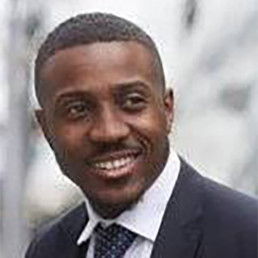
Written by Krystian McInnis
Krystian McInnis is a Religious Education consultant, advisor, and researcher specialising in decolonising and diversifying Religious Education. With a career that spans the public, private, and charity sectors, he brings extensive national and international experience in curriculum diversification and decolonisation. As the Co-Founder of Reimagining Education, Krystian is dedicated to creating a more inclusive and equitable educational system where everyone feels seen, heard, and that they belong.
In recent years, educators worldwide have begun to scrutinise their curricula for underlying biases and exclusions, calling for a wider range of diverse materials to enhance every student’s learning journey (Kara 2022). While many teachers hold a strong commitment to equality, their curricula still lack diversity, and often fail to reflect the multiplicity of perspectives that make up our increasingly globalised world. As societies grow more diverse, educational institutions face increasing pressure to adapt curricula that genuinely reflect the communities they serve. For many educators, “reimagining” the curriculum to embrace diversity and equity means moving beyond mere rhetoric or the adding of decorative slides; it requires a transformative approach that at its epicentre embraces inclusion, broadens perspectives, and fosters a deeper understanding of global issues. This ultimately brings to the forefront an essential question: how can educators reimagine and enrich their curricula to ensure all students see themselves represented, where they can feel seen, heard and believe that they belong.
The Need for Change
In May 2020, following the senseless killing of George Floyd Jr, amidst a time of isolation and solitude, many individuals began questioning not only their personal beliefs but also the societal structures that perpetuate inequality. The mere stance of not racist, no longer suffice, saw many people make an active shift towards reconsidering their position to one of anti-racist, intentionally seeking ways to disrupt and remove the barriers many face on a daily basis worldwide both from a personal and an institutional perspective.
With this being the landscape, many teachers decided they wanted to make meaningful changes and begun questioning their lessons and curriculums, exploring the inclusivity of them and to what extent they were representative of the diverse nature of the country and communities they served. Nabagereka and Melzer (2022) argue that for children and young people to fully engage with their learning, they need to see themselves reflected in what they are learning about. Furthermore, they argue that by not feeling represented in the curriculum, this can be disempowering and discouraging, negatively impacting pupil wellbeing, stopping them from achieving their full potential. Therefore, diversifying the curriculum extends beyond a mere nice to have, but rather critical for student care.
Engaging All Learners: The Imperative of an Equitable Curriculum
A diverse and inclusive curriculum plays a fundamental role in developing cultural competence, empathy, and critical thinking in students. It allows all students to see themselves and others within their learning, not only fostering a sense of belonging but also supporting with the much-needed work on social cohesion too. Banks (2015) argues that inclusivity in education not only enriches the learning experience for students from marginalised communities, but also benefits all students by broadening their worldviews and preparing them for a multicultural society. Without a deliberate effort to incorporate diverse perspectives, we risk perpetuating a curriculum that reflects an extremely narrow and predominantly Eurocentric, White male-dominated narrative.
Whilst the uptake has been slow, and efforts lagging within many institutions, the call for a more diverse curriculum has been clear. The Commission on Race and Ethnic Disparities (CRED) report recommended curriculum reforms to increase the representation of Black, Asian, and Ethnic Minority communities, arguing that more inclusive content could help reduce racial disparities (CRED, 2021). Additionally it asserted that a curricula reflecting a range of experiences, histories, and perspectives contributes to a learning environment that is more engaging, inclusive, and better prepares students for citizenship in a multicultural world.
Limitations in Traditional Curricula
It would be remiss of me however, to not state there are barriers and limitation. The first step however, in building a diverse and equitable curriculum is acknowledging the limitations in traditional approaches. Traditional curricula often exhibit an over-reliance on Western-centric authors, perspectives, and historical events, particularly within the humanities. Within this we have seen the intentional omitting of stories, contributions and voices of cultures, far too often classified as ‘other’ (Au, 2009). Therefore, a curriculum audit is a way which can identify gaps, guiding us to understand where imbalances and exclusions may exist. I would recommend that when starting an audit to critically assess a curriculum, it is vital to consider the following questions:
- Are there voices, narratives, or cultural perspectives missing from my curriculum?
- Does the curriculum offer diverse perspectives within each subject area?
- How does the material encourage students to engage critically with the world around them?
Building an Inclusive Curriculum
Creating an inclusive curriculum involves more than the mere adding of decorative diverse images, but rather relies on three core elements: representation, relevance and reflective engagement.
Representation: Critical to an inclusive curriculum is the reflection of a wide range of perspectives, including those from various racial, cultural, socioeconomic, and gender groups. It is important to remember, diversification does not remove existing literary masterpieces by White authors, nor does it erase Western history, or remove Europe from the map in geography lessons as some might suggest, but rather broadens the amount of narratives being explored. For example, presenting African nations not merely through a lens of poverty, but also in terms of their rich resources and complex histories offering a fuller picture of the individual countries. In doing so, it helps to present a balanced narrative of events allowing students to engage with an in-depth, more nuanced understanding of the world around them.
Relevance: Schemes of work should be culturally and contextually relevant to students’ lives. Whilst the communities practitioners serve now might be monocultural, it is imperative that they are preparing their students for the wider, multicultural Britain they live in, and the globalised world around them. Critical to a diverse and inclusive curriculum is one that not only engages students academically but also fosters critical consciousness, helping students to understand, question, and reshape the world they live in, allowing for them to question and formulate their own worldviews. By doing so, we can at least begin to develop a curriculum that resonates with students’ identities and experiences, enabling them to connect their learning to broader societal issues.
Reflective Engagement: As reflective practitioners, it is of upmost importance that we encourage students to reflect too, with a robust diverse curriculum allowing for this to take place. An inclusive curriculum encourages students to question dominant narratives and think critically about issues of power, privilege, and inequity. Ultimately, through reflection, we create the space for students to explore and understand their own positionality too. Within this, students move from being merely passive recipients of knowledge to active participants in uncovering and understanding complex social dynamics (Au, 2009).
Conclusion: Embracing Diversity as a Journey, Not a Destination
Creating an inclusive curriculum is not a one-time task but an ongoing journey. While some may fear the time commitment required for these changes, it’s important to remember that small steps—such as integrating diverse materials or adapting lesson plans—are all meaningful progress. By embracing diversity iteratively, we can gradually build curriculums that reflects the values of equity and inclusion.
Note, resistance from stakeholders may arise, especially when changes challenge long-standing traditions. However, professional development and collaboration with colleagues is crucial for this work to be successful, whilst also not overwhelming ourselves or the curriculums already in place.
Whilst the journey might be difficult, it is certainly a rewarding one. Through intentional and incremental work of diversifying your curriculum now, I assure you one thing: The work you do won’t just change the classroom, but will change you as a person too. As practitioners, we have an opportunity and an obligation to be part of this change, so that the teachers of tomorrow no longer have to justify the necessity of a representative curriculum and their pupils never have to suffer the pain of questioning their place in the classroom or society again. An inclusive curriculum not only enriches the educational experience but also helps students navigate a complex, interconnected world. By transforming our curricula, we take an essential step toward creating a society where all students feel seen, heard and that they belong. While the journey may be complex, the rewards—students who are more empathetic, culturally competent, and engaged global citizens – are worth it.
School Should Be Inclusive for Neurodiverse Learners: Creating a Classroom for All Minds.

Written by Nicole Sherwood
Nicole Sherwood is the Content Writer at award-winning recruitment agency Spencer Clarke Group. Spencer Clarke Group specialise in connecting teaching and support staff to mainstream and SEND schools all over the UK.
Schools can be an intimidating environment for all children and young people, and can present social and sensory challenges for those that are neurodivergent.
Providing the right support to SEND children in the classroom is crucial to their learning and can help them to reach their full potential.
According to GOV UK, it’s estimated that 15-20% of children and young people in the UK are neurodivergent. Some forms of neurodivergence include autism, dyslexia, Tourette’s syndrome and attention-deficit hyperactivity disorder, amongst many others.
Creating an inclusive environment for neurodiverse learners means being considerate of all pupils’ needs and ways of learning.
Here are three strategies Teachers can adopt in the classroom to ensure it is a welcoming and inclusive environment for neurodiverse learners.
- Change your thinking and your approach.
- Empower neurodivergent children and young people.
- Teach students about neurodiversity.
Change your thinking and your approach
Just as one approach doesn’t fit all, children who are neurodivergent also require different and individual teaching strategies and shouldn’t be categorised according to their neurodiversity. Consider teaching as more than just educating, but rather as making meaningful connections and empowering students.
Get to know your students and change your approach to learning, as every student requires different techniques and styles of learning to thrive and feel comfortable. Give pupils the opportunity to work in a quiet area if they prefer, and work with pupils to meet their own specific needs and build on their strengths.
Neurodiverse learners benefit from having options as they can ensure inclusivity and security as well as offer new experiences and opportunities to learn and grow.
Empower neurodivergent children and young people
Empowering neurodivergent children and young people is crucial to their learning and growth as it can help them develop a positive self-image, feel confident and thrive in an inclusive environment.
Be sure not to exclude, overcompensate or treat those who are neurodivergent differently to other students. Listen to neurodivergent pupils and use this feedback to ensure your school policies reflect these views. Follow pupils’ lead to help them feel safe, included and celebrated for their achievements.
It’s important to empower children and young people in the classroom so they can feel safe, act authentically and thrive in the classroom. Some neurodivergent pupils’ might struggle to take initiative and it’s important that Teachers give each child the opportunity and the means to be in charge of their own learning.
Support students’ sense of self and development by encouraging them to thrive and embrace their differences. Be patient, provide students with options and alternatives and encourage students to ask questions and be vocal about their decisions.
Teach students about neurodiversity
All students make up the diversity of a classroom and creating an inclusive environment for all learners begins with awareness. The representation of neurodivergent children in the classroom promotes equality and equity and it’s important to consider how you teach and address neurodiversity in the classroom.
Educate students to make everyone aware of the different types of neurodiversity and how it can affect people’s learning and school experience. Make all students aware of the different learners in the classroom by acknowledging and celebrating the strengths and talents of neurodivergent children in your school community.
By embracing neurodiversity and differences in the classroom all children can understand how accommodations for neurodivergent children help to facilitate learning and engagement. This can also help with different types of engagement in the future in regards to cultural and social differences.

